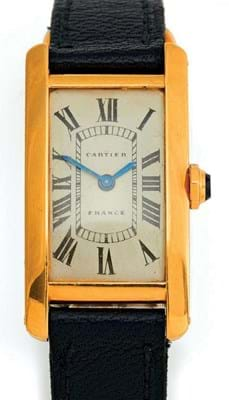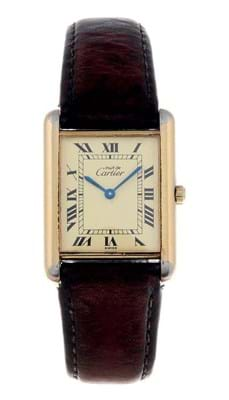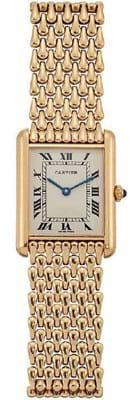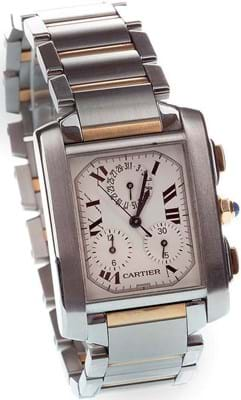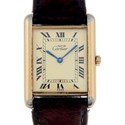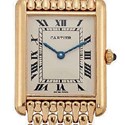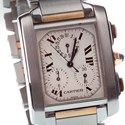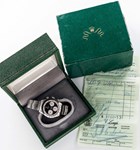It is primarily through the huge number of modern homages that the Cartier Tank had become the world’s most recognisable dress watch. Last year alone, a host of new anniversary editions were created to mark 100 years of production.
Less appreciated is that, among the thousands of Cartier Tanks sold on the secondary market every year, watches from the pre-war era are surprisingly rare. In the first years Louis Cartier’s machine-age design entered production perhaps just six were made per annum. In the first 50 years, the entire run was fewer than 6000.
It’s why some observers believe pre-war Tanks appear undervalued when compared with other more fashionable aspects of the watch market.
According to company lore, the Tank was inspired by the tread of a Renault FT-17, a mechanical wonder that caused hell in the final throes of the Great War.
In truth it was simply an elegant update of the square Cartier Santos but the connection to the Western Front and the theatre of combat made for good marketing. The first Tank, today the antithesis of the more macho tool watch, was in fact presented as a victory watch to the US General John Pershing.
Few survivors
Most early Tanks have movements marked for the European Watch & Clock Company – a partnership that joined Cartier with Edmond Jaeger and the Swiss firm of LeCoultre.
The contract was finally cancelled in 1933 as production all but ceased after the Wall Street Crash but together Cartier and Jaeger created the defining versions of the watch in the 1920s: the Normale (square), the classic LC (rectangular rather than square), the Cintrée (curved to fit the contours of the wrist) and the Chinoise (with bars above and below the dial, notionally inspired by the roof of a Chinese temple) and the elongated Allongée.
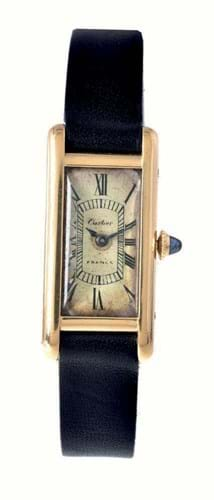
All but the very earliest Tanks made prior to 1933 have movements marked for the European Watch & Clock Company. This Allongée model sold for £2400 at Dreweatts on March 18.
The Tank à Guichets created in 1928 was the most daring of all: the dial was obscured with a sheet of brushed gold, with two small ‘windows’ displaying the hour and the minutes. All shared the distinctive cabochon-cut sapphire to the winding crown.
The latter are extremely rare (one sold for $105,000 at Phillips New York in 2017) but none of these watches are common. Records suggest that fewer than 50 watch movements a year were required by Cartier in the first half of the 1920s, a number that jumped to around 100 in the second half of the decade.
The Tank Cintrée, made in small batches from 1921, is considered among the most elegant of all of the many variants. Examples in original condition come for sale very infrequently but one emerged at Van Ham in Cologne on May 28. Estimated at €1000-2000, it sold via thesaleroom.com for €14,000 (£12,700).
It was really not until the 1960s that the Tank began to sell in significant numbers. Jackie Kennedy was given hers in 1962 (Kim Kardashian bought it at Christie’s in 2017 for $300,000) while Andy Warhol owned four. “I don’t wear a Tank to tell the time,” he said. “In fact, I never wind it. I wear a Tank because it’s the watch to wear.”
A sample of Cartier Tanks watches recently sold or coming up for sale appear on this page.


